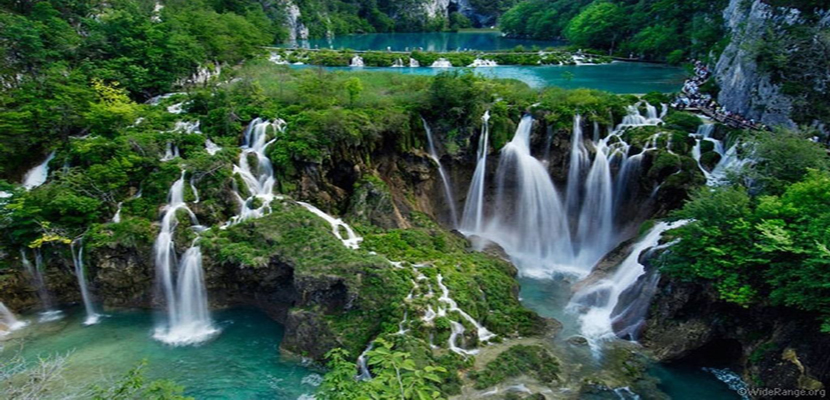
Croatia It has eight Natural Parks but one of the most striking is for its original landscapes is the one that houses the Plitvice Lakes, recognized as a Natural Reserve by UNESCO in 1979. This set of lakes, waterfalls and streams, surrounded by dense vegetation is also a World Heritage Site and is considered one of the most beautiful natural places in Europe.
The Plitvice Lakes are in the Lika region of central Croatia and very close to the border with northwestern Bosnia. To visit them, it is best to drive to the nearby town of Plitvicka Jezera, located next to Lake Kozjak, which can be traveled on foot through paths and wooden walkways or by boat and with special electric vehicles.
There are many routes and walks that can be taken through the region as this Natural Park has thirty thousand hectares to get lost. These are divided into two large areas. On the one hand the twelve upper lakes (which are the largest) and on the other the lower lakes, located in an Upper Cretaceous canyon where Lake Milanovac, Lake Gavanovac and Novakovi? a Brod stand out, with its spectacular 78-meter waterfall.
The upper and lower lakes have different characteristics. While the former have crystal clear waters and are surrounded by abundant vegetation, the latter are part of a steeper set in the center of a canyon where only small bushes grow. The waters of the lower lakes are those that have the spectacular turquoise color that visitors like so much. In addition, it is in this area where the largest waterfall in Croatia is located and one of the most famous caves in the park: the Supljara Cave.
The Plitvice Lakes Nature Park receives more than 1.200.000 tourists a year and It is home to a large number of birds as well as other animals such as the European brown bear or the lynx.
The Plitvice Lakes are open to the public between 08:00 and 18:00 every day of the year. The price of entries is as follows: 23,5 euros for adults, 10,4 for young people and 14,5 euros for students. Children under the age of seven are free.